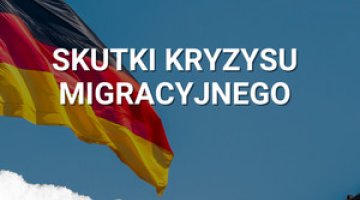A new tool in Germany’s raw materials policy
On 2 October, the Kreditanstalt für Wiederaufbau (KfW) development bank began accepting proposals for co-funding from the German Raw Material Fund (Rohstofffonds), which was established in September on the government’s initiative. The fund is valued at €1 bn and is valid until 2028. Co-funding will be provided to domestic and international projects focused on mining, processing, or recycling of raw materials that the EU has classified as strategic in its Critical Raw Materials Act (CRMA). Support, in the form of various financial instruments, will range between €50 mn and €150 mn and will also include KfW’s direct capital involvement through the purchase of minority stakes in specific companies.
The purpose of this initiative is to secure the supply of metals and minerals critical to German companies by reducing imports from China and diversifying sources. Germany has too few alternative import sources and has therefore launched comprehensive efforts to secure stable supplies of raw materials from other regions. Owing to its less stringent environmental legislation and economies of scale, China has achieved global dominance in the processing of many critical raw materials, such as rare earth metals, graphite, lithium, and cobalt.
Commentary
- The future development of key sectors of the German economy depends on securing raw materials. Numerous minerals and metals identified in the CRMA are crucial to the most significant segments of German industry including the automotive, machine-building, and electronics sectors. Lithium, manganese, graphite, nickel, tungsten, and other resources are used in the production of electric vehicle batteries, wind turbines, photovoltaic panels, and other products, making them essential to the success of the green transition. According to forecasts, global demand for these elements will grow significantly (it is estimated that by 2040, demand for lithium will be 15 times higher than in 2020). The German industrial sector, particularly the Federation of German Industries (Bundesverband der Deutschen Industrie; BDI), has pressured the federal government to adopt a more active raw materials policy.
- The Raw Material Fund was established as a result of a shift in Germany’s raw materials policy, following Russia’s armed aggression against Ukraine in 2022, and the simultaneous rise in the risk of political and economic confrontation with Beijing. According to the BDI’s industrial lobbying group, over 90% of Germany’s rare earth metal imports come from China. Between 2013 and 2023, China’s share of Germany’s total lithium imports rose from 1% to 24%. China is Germany’s second largest lithium provider after Chile. The federal government is concerned that, in the event of a conflict, Beijing could exploit this dependence to exert political pressure on Berlin. Such a move would not be unprecedented, as in 2010 China halted its rare earth metal exports to Japan following a conflict in Japanese coastal waters. As a result, in January 2023, the Federal Ministry for Economic Affairs and Climate Action published a document supplementing the 2020 version of Germany’s raw materials strategy. The foundations for establishing a long-term policy in this regard were laid out in a document issued in 2010 (Rohstoffstrategie der Bundesregierung). The recent expansion of this strategy aims to devise a plan for diversifying raw material sources and establishing an EU-wide cooperation framework in this area.
- The need to identify alternative sources of strategic raw material imports has strengthened Germany’s cooperation with France and Italy. In June 2023, Germany’s Vice Chancellor and Federal Minister for Economic Affairs, Robert Habeck, along with his French and Italian counterparts, agreed to enhance cooperation in raw materials policy. By 2023, Paris and Rome had established special funds (each worth €2 bn) to support projects under this policy and had pressured Berlin for months to create a similar instrument to enable joint financial participation in foreign initiatives.
- The slow pace of raw materials exploration in other regions of the world has contributed to the current economic pressure on Germany. Owing to the low cost of raw materials mining and refining in China, companies avoided seeking alternative sources in other countries for many years. However, the recent shift in strategy, combined with emerging political risks, has prompted Germany’s urgent efforts to find alternative sources of supply, for instance in Uzbekistan, Kazakhstan (see ‘Acquiring resources and legitimising the partnership: Scholz’s visit to Central Asia’), and African states. Australia, another resource-rich country, has been cooperating with Germany in supplying various metals since 2017, while Canada has emerged as another potential raw materials provider. Germany itself possesses significant domestic lithium deposits. Chancellor Olaf Scholz supports their exploration, with Zinnwald Lithium planning to develop one of Europe’s largest lithium mining projects in Altenberg, Saxony, by 2030. Moreover, Germany supports lithium exploration in Portugal and Serbia (see ‘The Serbian-EU partnership in procuring critical raw materials’), despite significant protests from local populations.





